A refreshing change has hit U.S. airline websites this morning: the return of all-in pricing. Under a new directive by the Department of Transportation, airlines must now display all-in pricing initially and at all junctures of your flight search–not just on the final purchase page.
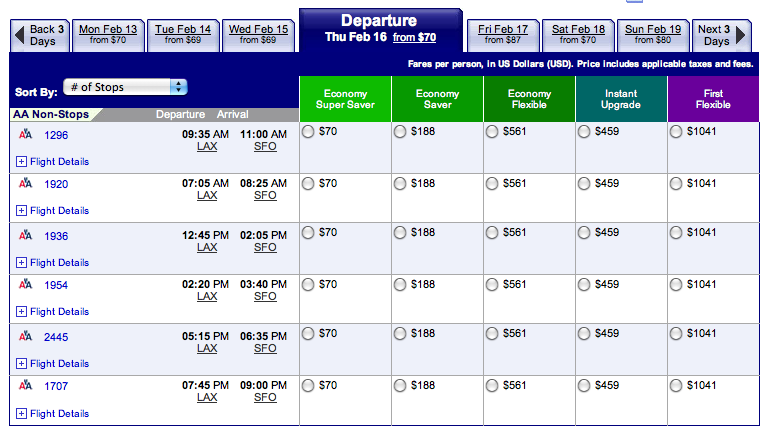
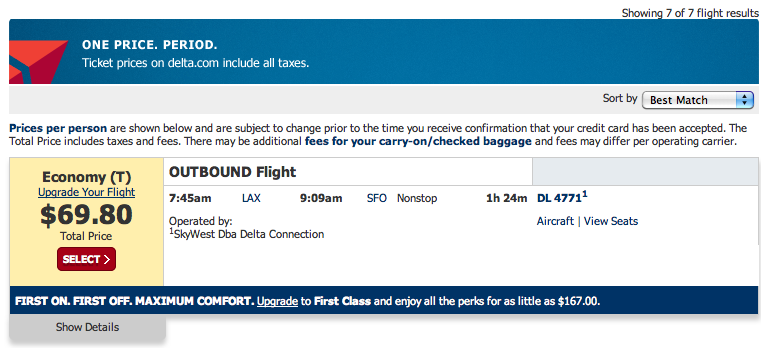
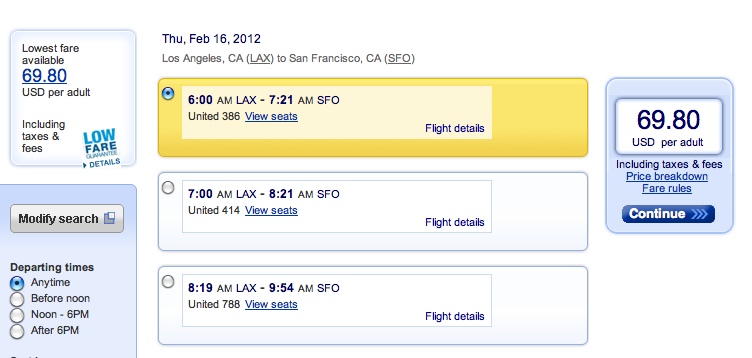
Most airlines have passively submitted, but low-cost Spirit Airlines came out swinging:
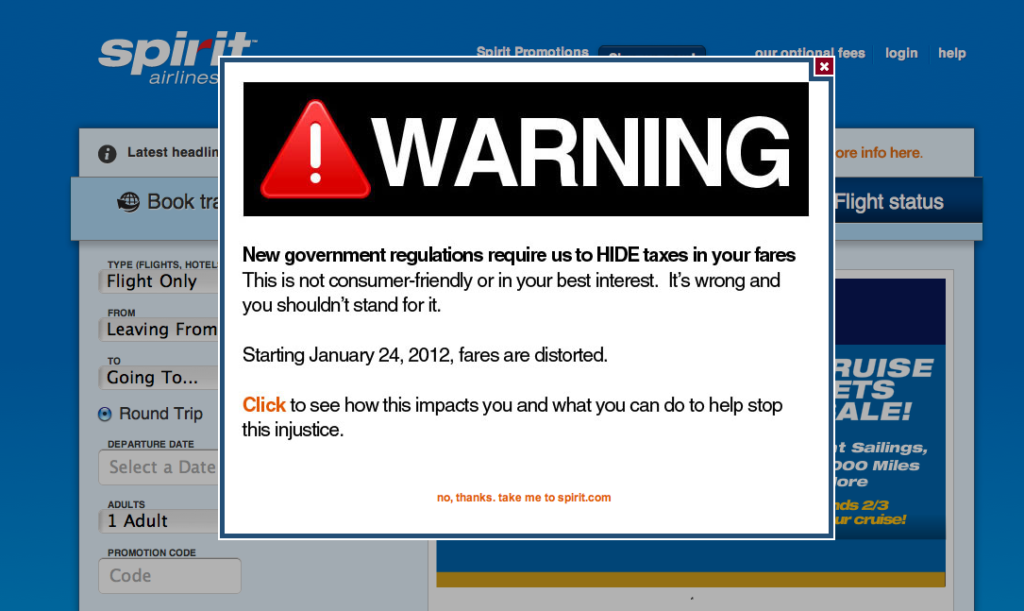
This is not consumer-friendly or in your best interest. It’s wrong and you shouldn’t stand for it.
Starting January 24, 2012, fares are distorted.
Why?
Thanks to the U.S. Department of Transportation’s latest fare rules, Spirit must now HIDE the government’s taxes and fees in your fares.
If the government can hide taxes in your airfares, then they can carry out their hidden agenda and quietly increase their taxes. (Yes, such talks are already underway.)
And if they can do it to the airline industry, what’s next?
As the transparency leader and most consumer-friendly airline, Spirit DOES NOT support this new USDOT mandate. We believe the better form of transparency is to break out costs so customers know exactly what they’re buying.
What can you do to help stop this injustice?
Join us in keeping government taxes and fees low and transparent by contacting your elected officials.
Sorry, but that is ridiculous. Spirit makes it sounds like consumers will now have no idea what the taxes are on a fare. That is simply not the case–take a look at the screenshots below from United and Spirit. Everyone will see the taxes broken out once they click to purchase the fare. The only thing this rule does is prohibit airlines from publishing deceptively low fares to lure customers in, where they too-often found (ahem, Spirit) the advertised fare was tripled or quadrupled once taxes and fuel surcharges were added in.
“Nothing in our rule will prohibit a carrier from informing consumers that the fare includes a specified amount of taxes and government fees, as long as the stated fare includes those taxes and fees,” stated DOT spokesman Bill Mosley. “The carrier can then break out taxes and fees if it wishes.”
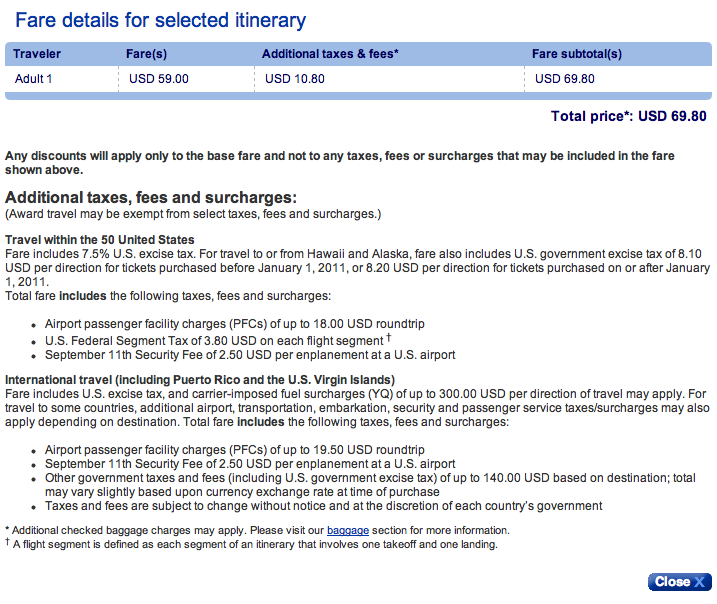
And make no mistake: the airlines brought this upon themselves by choosing to segregate fuel surcharges from the base fare. By adding them to the “taxes and fees” they made it seem like the big, bad government was collecting all the money and the poor airline was just scraping by with a fraction of the final cost of the ticket. Not so–fuel is and always has been a component of an airline’s operating cost and should not be pawned off as some additional fee that the airline won’t collect on.
The biggest perpetrator of the deceptive pricing scheme was Lufthansa–I’ll be quite happy not to get e-mails like this anymore:
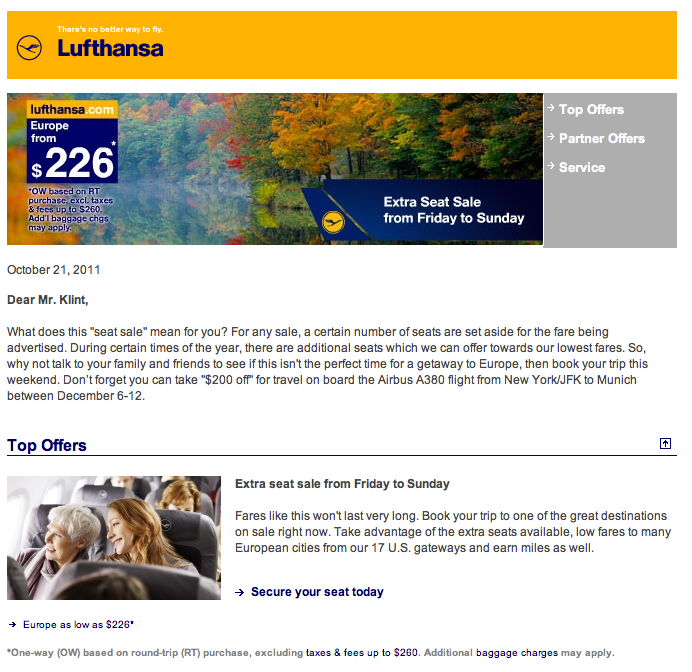
Will anyone defend advertising $226 fares with taxes and fees of up to $260? Government intervention is not always a bad thing and I applaud DOT’s insistence that airlines and travel agencies stop the practice of masking what they will actually charge you for the tickets they are hawking. This is a victory for consumers.

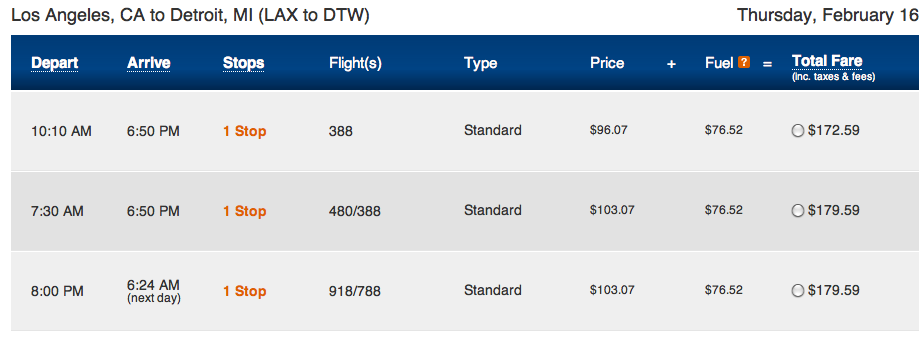
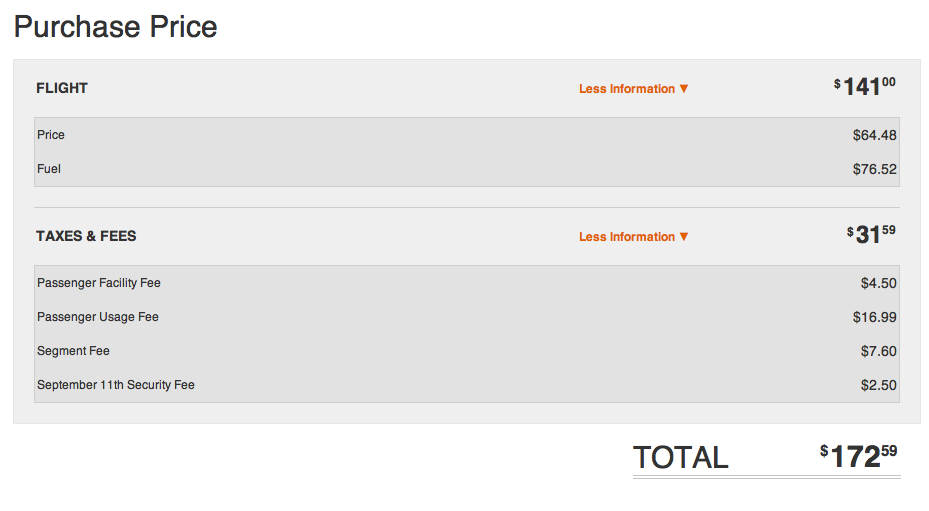



I heard this morning that it only applies to US Flag carriers, though I see no reference to that on the DOT website. True/false?
@Andre–my understanding is that it applies to all carriers advertising in the U.S. I’ve already seen Lufthansa, for example, shift to a/i pricing (as they have done for years on their German website).
http://www.avionews.com/index.php?corpo=see_news_home.php&news_id=1137155&pagina_chiamante=index.php